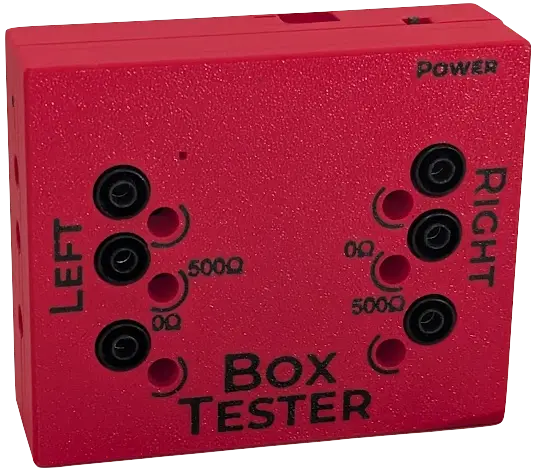What's this about?
When I first started developing a homemade scoring box for our local club, the coach asked an excellent question: How do you know if it works?
That's why the first thing I designed and built was a microprocessor-controlled connection switchboard. This tester has the ability to connect or disconnect any connection between the six lines of the two fencers.

What can it do?
The box tester can simulate any sequence of electrical interactions between two fencers with sub-millisecond precision.
For example, it can verify that the saber lockout time is 170ms and not 171ms. It can ensure that whipovers are ignored if a short hit (4 to 15 ms) occurs during a parry.
It can verify that the minimum hit time is 14ms for foil. It can ensure that an opponent's hit is registered even if the foil is shorted to the lame. It can verify that epee hits on the guard do not trigger a hit.
The FIE rules for epee allow a lockout time of anywhere between 40ms and 50ms. The tester can be used to check what timing a given box actually uses.
How does it work?
A microcontroller controls 15 solid-state relays that control all possible connections between the 6 wires that connect the fencers to the scoring box.
While the underlying microprocessor is operating with sub-microsecond precision, the solid-state relays can take up half a millisecond to activate or deactivate a given connection.
All 15 possible connections between the 6 wires can be individually controlled and are exactly synchronized.
The tester also includes variable resistors to simulate bad or failing body cords or high-resistance lames.
How do you control it?
A simple configuration language is exposed over a bluetooth connection. The configuration language allows specifying a given sequence of connections and executing them.
Can we get more technical details?
It uses an RP2040 microcontroller to control 15 solid state relays (SSRs).
The SSRs were chosen to have low on-resistance (<1Ω) and fast switching times (<1ms). Traditional physical relays are far too slow with typical switching times of 50ms or more. Using SSRs ensures that the box tester is electrically isolated from the fencing circuits and therefore is unaffected by the voltage and current operational characteristics of the scoring box under test.